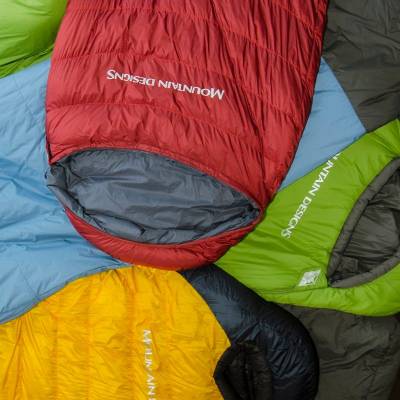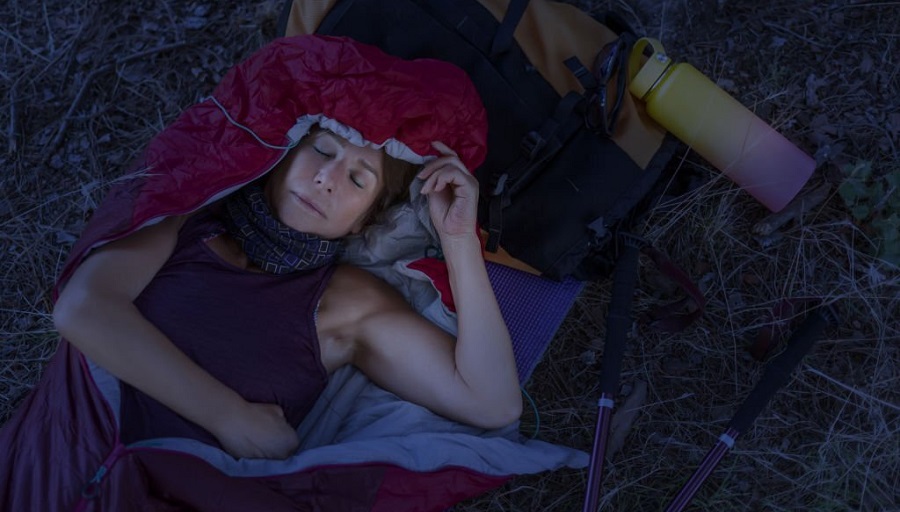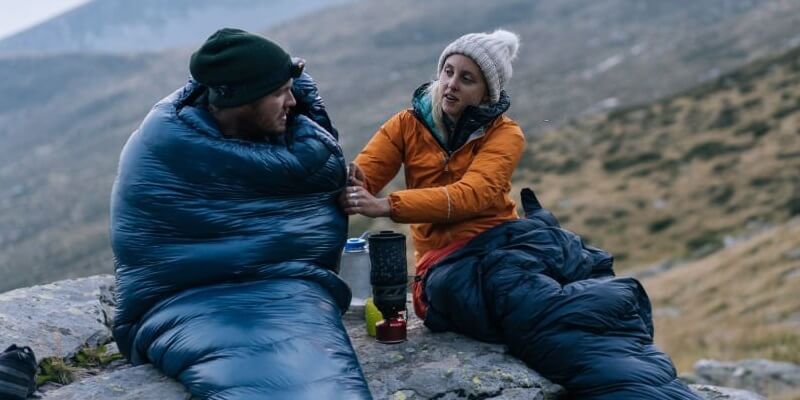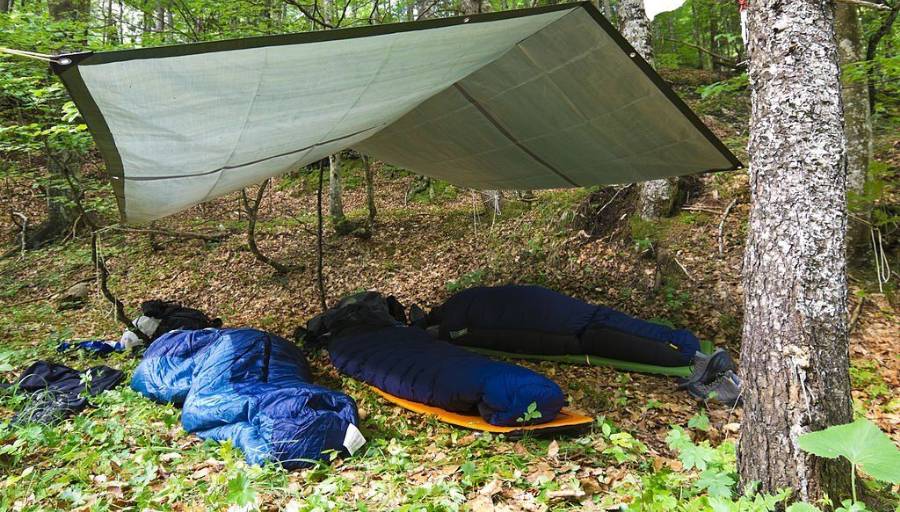Sleeping Bags vs Quilts: What to choose?

When it comes to outdoor adventures, having a dependable sleeping system is crucial for ensuring a comfortable and restful night. Traditionally, campers, hikers, and backpackers have relied on sleeping bags. However, in recent years, quilts have emerged as a popular alternative. As more outdoor enthusiasts weigh the benefits of both, the debate of “Sleeping Bags vs Quilts” continues to grow.
Sleeping bags and quilts are both designed to provide insulation and warmth while sleeping outdoors, but they have distinct differences in design and functionality. Understanding the characteristics and features of each option is crucial in making an informed decision about which one is best suited for your needs.
In this article, we will compare sleeping bags and quilts, exploring their construction, pros and cons, and the situations in which each excels. Whether you’re a seasoned outdoor enthusiast or a novice camper, this guide will help you determine which sleeping system is the right choice for your next adventure.
Differences Between Quilts & Sleeping Bags
Let’s delve into a more in-depth analysis of the differences between quilts and sleeping bags:
Design and Coverage:

- Sleeping bags: Sleeping bags are designed to fully enclose your body, providing insulation on all sides. They have a hood that covers your head, which offers additional warmth and protection. The full enclosure helps minimize drafts and keeps heat trapped inside. Some sleeping bags also feature a draft collar around the neck area to prevent heat loss.
- Quilts: Quilts, on the other hand, have an open back or a foot box and lack a full enclosure. They are essentially blankets with attachment points or straps that can be secured around your body or mattress. Quilts are meant to be used with a sleeping pad, which provides insulation and eliminates the need for the bottom fabric layer found in sleeping bags.
Weight and Packability:

- Sleeping bags: Sleeping bags have been heavier and bulkier compared to quilts. The insulation material and the additional fabric used for the full enclosure contribute to their weight. However, advancements in technology have led to the development of lightweight and compressible sleeping bags suitable for backpacking and other outdoor activities.
- Quilts: Quilts are known for their lightweight and compact design. By eliminating the fabric and insulation found on the bottom of sleeping bags, they can significantly reduce weight and pack size. This makes quilts popular among ultralight backpackers and those who prioritize minimizing the weight of their gear.
Temperature Regulation:

- Sleeping bags: With their full enclosure, sleeping bags provide excellent heat retention and protection from the cold. They are available in different temperature ratings, allowing you to choose a bag suitable for specific weather conditions. Sleeping bags often have zippers that can be opened or closed partially or fully, enabling you to regulate ventilation and adjust warmth as needed.
- Quilts: Quilts offer greater versatility when it comes to temperature regulation. With their open back or foot box, they provide more freedom of movement and allow for better airflow, which can be beneficial in warmer conditions or for those who tend to sleep hot. Quilts can be easily adjusted by shifting their position, tucking them under or over your body, or using the attachment points to secure them tightly around your mattress. This flexibility allows you to fine-tune the level of insulation and ventilation.
Comfort and Sleeping Style:

- Sleeping bags: The enclosed design of sleeping bags can provide a sense of coziness and security, which some campers prefer. They are well-suited for people who like to sleep in a snug, cocoon-like environment or those who may feel restless during the night and tend to move around less.
- Quilts: Quilts offer more freedom of movement, which allows you to sleep in various positions and stretch your limbs more easily. They are particularly comfortable for active sleepers or those who prefer a less restrictive sleeping experience. Quilts also eliminate the confinement that some people may feel in a traditional sleeping bag, making them feel more like sleeping under a regular blanket.
Price Range:

- Sleeping bags: The price of sleeping bags can vary significantly depending on factors such as brand, insulation type (down or synthetic), temperature rating, and additional features. High-quality sleeping bags with advanced insulation technologies can be quite expensive, especially those designed for extreme conditions.
- Quilts: Quilts generally have a wide price range, ranging from affordable options to high-end models. The price can depend on factors such as the quality of materials used, brand reputation, and any specialized features included.
When To Choose Sleeping Bags vs Quilts
Choosing between a quilt and a sleeping bag depends on various factors, including weather conditions, personal preferences, camping style, and the specific demands of your outdoor activities. Here is a complete guide to help you decide when to choose a quilt or a sleeping bag:
Choose a Sleeping Bag When:
- Cold Weather: If you plan to camp in colder climates or during the winter season, a sleeping bag is the preferred choice. Sleeping bags provide excellent insulation and full coverage, trapping heat inside and keeping you warm in chilly temperatures.
- Traditional Sleeping Experience: If you enjoy the sense of being fully enclosed and cocooned while sleeping, a sleeping bag offers a snug and cozy experience. The full enclosure and hood provide a higher level of protection from drafts and cold air.
- Versatility Across Different Conditions: Sleeping bags are available in a wide range of temperature ratings, making them suitable for various weather conditions. If you engage in camping trips throughout the year and encounter diverse climates, a sleeping bag can be a versatile choice.
- Minimal Adjustment Required: Sleeping bags are easier to use without much adjustment. Simply zip them up, and you’re good to go. If you prefer a hassle-free setup and don’t want to spend time securing a quilt, a sleeping bag provides a convenient solution.
- Extreme Conditions: For expeditions or camping in extreme weather conditions, such as high-altitude mountaineering or winter camping in harsh environments, specialized sleeping bags with advanced insulation and temperature ratings are designed to withstand these challenges.
Choose a Quilt When:
- Warm Weather: Quilts excel in warmer weather conditions. If you are camping in a mild climate or during the summer months, a quilt can provide adequate insulation without overheating you.
- Weight and Packability: If you prioritize reducing the weight and pack size of your gear, quilts are an excellent choice. They are lighter and more compact than most sleeping bags, making them ideal for ultralight backpacking or long-distance hiking.
- Active Sleeper: If you are an active sleeper who moves around during the night or prefers more freedom of movement, a quilt allows you to shift positions easily without feeling constricted.
- Customizable Temperature Control: Quilts offer versatility in temperature regulation. You can adjust the coverage by tucking the quilt around your body or using the attachment points to secure it tightly. This flexibility allows you to fine-tune the level of insulation and ventilation according to your comfort.
- Cost-Effective Options: Quilts generally have a wide price range, offering cost-effective options for those on a budget. Depending on the brand and features, you can find quilts at various price points.
FAQs
Are quilts warmer than sleeping bags?
Quilts and sleeping bags can provide similar levels of warmth when properly selected for the temperature rating. However, sleeping bags have better heat retention due to their full enclosure, which minimizes heat loss. In colder conditions, sleeping bags offer more insulation, while quilts are better suited for milder or warmer weather.
Can quilts be used in cold weather?
Quilts can be used in cold weather, but they require additional insulation to provide sufficient warmth. To use a quilt in colder conditions, it’s common to combine it with a sleeping pad for insulation underneath and layering with clothing or a down jacket for added warmth.
Are sleeping bags more comfortable than quilts?
The comfort of sleeping bags versus quilts is subjective and depends on personal preference. Some people enjoy the snug and cocoon-like feel of a sleeping bag, while others prefer the freedom of movement and versatility offered by quilts. It’s best to try both options or consider your sleeping style before making a decision.
Are quilts more lightweight and packable than sleeping bags?
Quilts are generally lighter and more packable than sleeping bags. By eliminating the fabric and insulation found on the bottom of sleeping bags, quilts can significantly reduce weight and bulk. They are a preferred choice for ultralight backpackers or those looking to minimize the weight of their gear.
Can quilts replace sleeping bags entirely?
Quilts can replace sleeping bags for many outdoor enthusiasts, especially in warmer weather conditions or when weight and packability are important factors. However, in colder climates or during winter camping, where maximum warmth and protection are necessary, a traditional sleeping bag may be a better choice.
Are quilts more cost-effective than sleeping bags?
Quilts generally have a wide price range and offer options for various budgets. While some high-end quilts can be expensive, there are also more affordable options available. Sleeping bags, on the other hand, can vary in price depending on factors such as brand, insulation type, and additional features. It’s important to consider your budget and the specific features you require when comparing costs.
Can I use a quilt and sleeping bag together?
Yes, you can use a quilt and a sleeping bag together for added warmth in extremely cold conditions. This combination provides extra insulation, with the quilt acting as an additional layer on top of the sleeping bag. However, it’s important to ensure that both the quilt and sleeping bag are compatible in terms of size and fit to avoid compressed insulation and cold spots.
Which is better for backpacking, quilts or sleeping bags?
Both quilts and sleeping bags have their advantages for backpacking. Quilts are generally lighter and more compact, making them popular among ultralight backpackers who prioritize weight reduction. Sleeping bags, on the other hand, offer more insulation and protection in colder climates. The choice between the two depends on the specific needs and preferences of the backpacker, as well as the anticipated weather conditions of the trip.
Conclusion
The choice between a sleeping bag and a quilt boils down to your needs and preferences.
Choose a sleeping bag if:
- You camp in colder climates or during winter, as sleeping bags provide better insulation and protection.
- You prefer a snug, fully enclosed sleeping experience and value the sense of being cocooned.
- You prioritize maximum heat retention and minimal heat loss.
- You prefer a hassle-free setup and less adjustment during sleep.
- You engage in extreme weather conditions or expeditions that require specialized features.
Choose a quilt if:
- You camp in warmer weather or during mild seasons when insulation needs are lower.
- You prioritize weight and packability, as quilts are generally lighter and more compact.
- You prefer freedom of movement and versatility while sleeping.
- You want customizable temperature control and ventilation options.
- You are on a budget and seek cost-effective options.
Remember to consider factors such as the expected weather conditions, comfort, camping style, weight considerations, and budget when making your decision. By carefully evaluating your needs, you can make an informed choice that ensures a comfortable and enjoyable outdoor sleeping experience.






